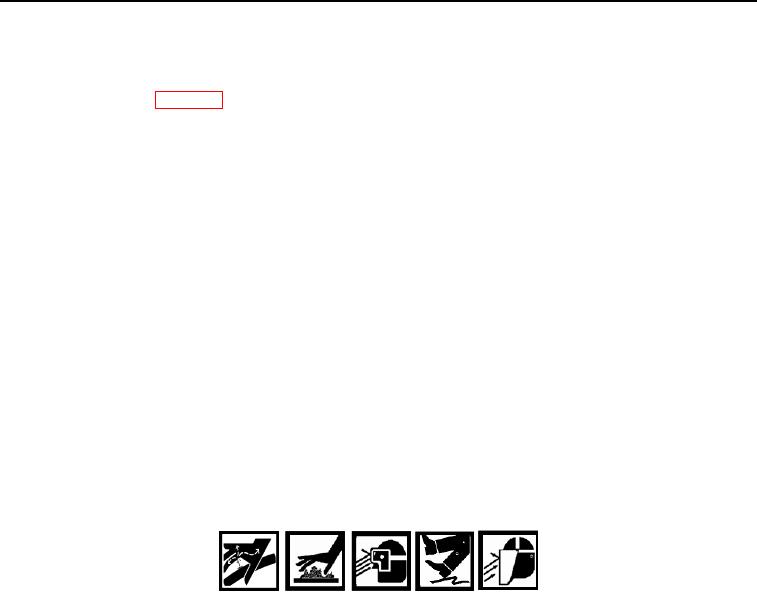
TM 5-2410-240-23-1
0031
FINAL HYDROSTATIC SPEED TEST CONTINUED
00031
14. Compare values recorded in step 6 with the following:
a. Engine speed should be 2,100 100 RPM. If unable to achieve engine speed, refer to Cannot Reach Top
Engine RPM in WP 0019.
b. Pressure at left hydrostatic pump should be 1,740 435 psi (12,000 3,000 kPa). If pressure is not within
specifications, refer to Hystat Pump and Motor Solenoid Calibration in this work package.
c.
Pressure at right hydrostatic pump should be 1,740 435 psi (12,000 3,000 kPa). If pressure is not
within specifications, refer to Hystat Pump and Motor Solenoid Calibration in this work package.
d. Pressure for left hydrostatic pump at test panel should be 1,740 435 psi (12,000 3,000 kPa). If
pressure is not within specifications, refer to Hystat Pump and Motor Solenoid Calibration in this work
package.
e. Pressure for right hydrostatic pump at test panel should be 1,740 435 psi (12,000 3,000 kPa). If
pressure is not within specifications, refer to Hystat Pump and Motor Solenoid Calibration in this work
package.
f.
Speed of left drive motor in forward should be 3,400 50 RPM. If speed of drive motor is motors is not
within specifications, refer to Hystat Pump and Motor Solenoid Calibration in this work package.
g. Speed of drive motors in forward and reverse should be 3,400 50 RPM. If difference between motors is
greater than 40 RPM, refer to Hystat Pump and Motor Solenoid Calibration in this work package.
15. When tests and adjustments are complete, stop engine, and relieve hydraulic system pressure (WP 0162).
Remove pressure gauges and install cab floor plate (WP 0205).
16. Remove support from machine and position on ground.
DECELERATION/BRAKE PEDAL TEST - HYDRAULIC
00031
WARN I N G
DO NOT disconnect or remove any hydraulic system hoses, tubes, or fittings unless
engine is shut down and hydraulic system pressure has been relieved. Escaping hydraulic
fluid under pressure can penetrate skin.
At operating temperature, hydraulic oil is hot.Allow hydraulic oil to cool before removing
any hydraulic fitting.
Wear protective eye covering and gloves.
Lubricating/hydraulic oils used in performa ce of maintenance can be very slippery.
n
Immediately wipe up any spills.
Failure to follow these warnings may result in injury or death to personnel.
C AU T I O N
Wipe area clean around hydraulic system, and cap all hydraulic hose ends along with
component connections during removal to protect against contamination. Failure to follow
this caution may cause damage to equipment.
0031-19

